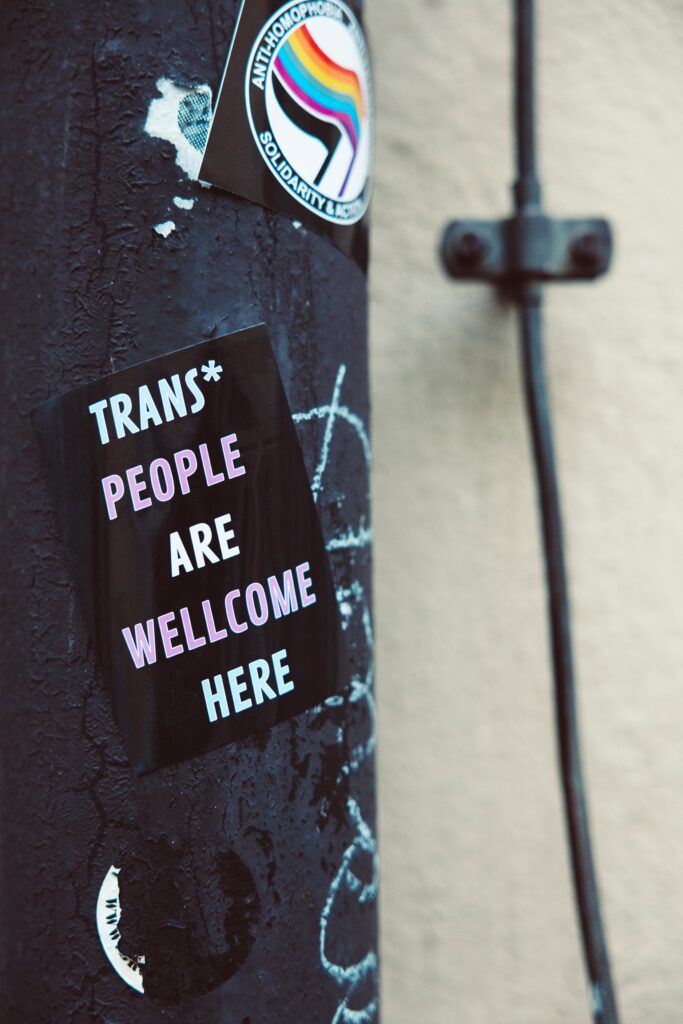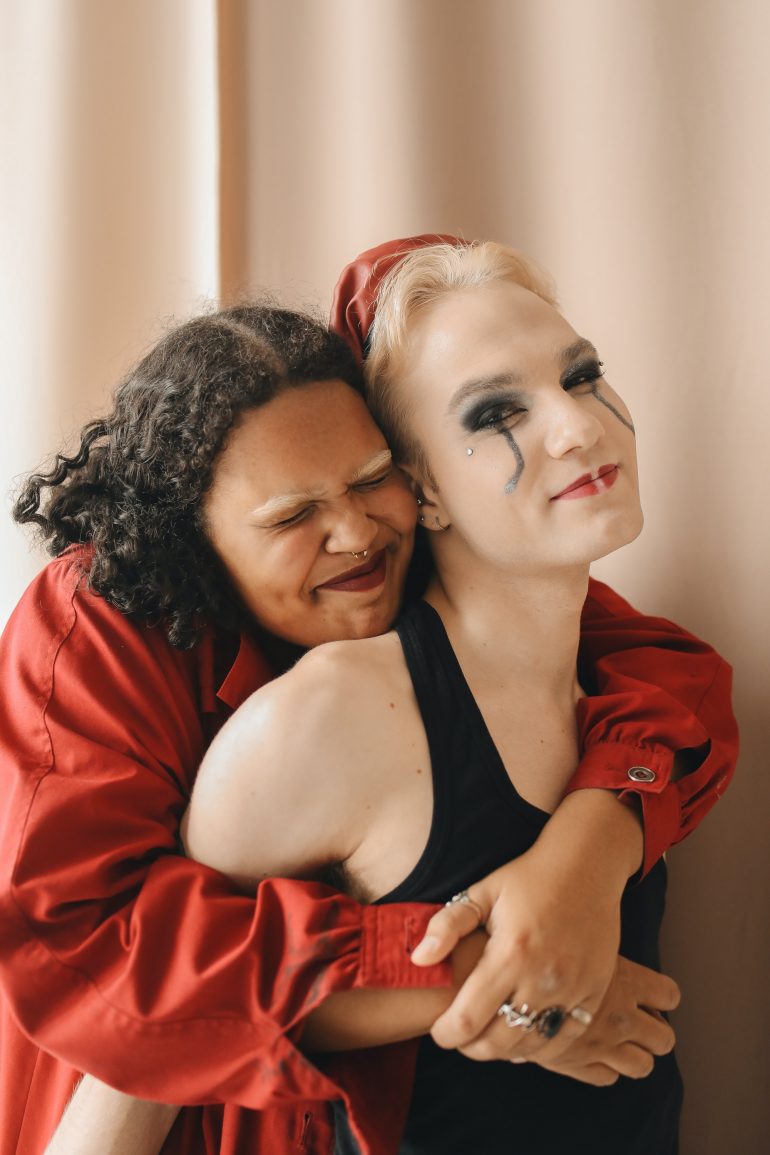In today’s world, where diversity and individuality are growing in importance, it is more important than ever to understand and respect the different aspects of human identity. Something that has found itself increasingly under the spotlight in the last few years is trans identity. Transgender people have the courage to go their own way and accept their true gender. In this blog article we want to look at trans identity in greater depth, and find out more about the long road trans people take to reach their intrinsic gender.
Reminder: Trans* means:
As we already know, the term “trans*” is an inclusive abbreviation for “transgender” and encompasses different identities and forms of expression beyond the binary system. The asterisk (*) is supposed to illustrate that it doesn’t only refer to transgender people in a narrow sense – it also includes other gender identities, such as non-binary, gender fluid or gender queer people.
Trans identity: What hides behind it?
Trans identity refers to the condition where a person does not identify with the gender they were assigned at birth. Instead, they have a gender identity that differs from their biological characteristics. It is the internal conviction of a person that they belong to the other gender or have a different gender sense. Trans identity is a complex and diverse experience that can vary from person to person.
It is important to understand that gender identity is not the same as biological gender or sexual orientation.
Trans identity refers to the personal identity of a person, and deserves respect, recognition, and support. It is particularly important to understand the often-difficult road faced by trans* people. Let’s look at each of the steps in more detail!
What is the “road” for a transgender person?
- Body and gender = self-acceptance and exploration – A person realizes that their gender identity does not correspond to the gender they were assigned at birth. They start to explore their identity and accept themselves as they are. Gender identity refers to a person’s individual sense of themselves as male, female or other, whatever their biological characteristics.
- Coming out – The first step on the path to accepting your intrinsic gender is coming out. This process can be extremely challenging, as it is linked with uncertainty, worries, and possible rejection. Trans people often have to work up the courage to reveal their true feelings and identity to their families, friends, and society. A supportive social environment plays a critical role in this process.
- Therapeutic support – Many transgender people seek therapeutic assistance to explore their thoughts and feelings, receive support with gender transition, and deal with possible emotional challenges. A professional therapist can help assist with the process.
- Real-life experience and social adjustment – Some people decide to have real-life experience, where they live their desired gender identity in different social situations. This might include changing name, pronoun, and gender in official documents.
- Social transition and/or hormone therapy – Social transition involves changing external appearance and social role to match a gender identity. For people who wish to undergo hormone therapy, this can be an important step. Hormone therapy can promote the development of secondary gender characteristics of the desired gender and support the physical adjustment. Before starting hormone therapy, there are often examinations and consultations to check individual suitability. Social transition enables trans people to live authentically and be perceived by others in line with their gender identity.
- Medical transition / gender reassignment operations – For some transgender people, gender reassignment surgery might be an important step to change their physical appearance to match their identified gender. This includes different measures like hormone therapy and extensive operations. These surgical interventions involve changing breasts or genitals. The decision to go down the route of medical measures is an intensely personal one that should be made by each person.
Psychological support during the entire process of gender identity exploration and transition is very important. Trans people can benefit from talking to therapists to work through their feeling, worries, and challenges. A supportive environment, friends and family can help to make the road as smooth as possible.
It is also important to remember that not all transgender people take the same road to gender reassignment, or want to go through all the steps. The decisions around and process of gender reassignment should be made by each person individually, supported by medical expertise and professional advice.

More information about trans identity!
As always, it’s very important to educate the public about what the road can be like for trans people. We’ve summarized the most important elements again for you here:
- Reducing prejudices and discrimination: Contribute to society treating trans people more respectfully. Inform yourself and communicate respectfully.
- Promoting acceptance and support: Trans identity is a new and complex subject for many people. Education can help people develop a better understanding of what it means to be trans. Ask yourself: how can you contribute to greater acceptance? Are there areas in your environment or job where you can help bring about greater acceptance?
- Strengthening self-acceptance among trans people: Education about trans identity can help trans people to better understand and accept themselves. Are there trans* people in your environment that you can support?
- Raising awareness of legal and social challenges: This can contribute to reducing discrimination and creating a fairer and more inclusive society. For example, you can support clubs or even do your part to raise awareness.

Love, support, and healing
As everywhere, love is an important factor in the transition process. Many people face a struggle with challenges in their family and hostility in their environment.
Education around this is imperative! But discussing how important love is can also be a step in the right direction. Our motto: more love for yourself, more love for your partner, and more love for the community. Solidarity and supporting friends, kindred spirits, and the LGBTQ+ community as a whole play an important role for trans people. The love that is shared in the community can convey a feeling of belonging, understanding, and mutual support.
We’ve looked at what trans identity means, which steps are necessary in the transition process, and the impact a respectful, loving environment can have on trans people.
Love is love. Everyone deserves both love and the right to a life that fits with their own image of themselves. This is why we want to increase awareness for the non-binary community. We think that people should decide on their own identity and sexuality, and live them freely, without being put in a box, whatever their orientation.
Image sources: pexels-polina-tankilevitch-7391045, pexels-markus-spiske-14640596, pexels-anna-tarazevich-5697408
